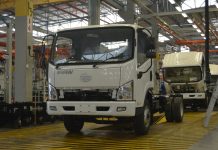Australian-based Agnew Gold Mine launched the 56 MW Agnew Hybrid Renewable Project in May 2020, and this move is set to provide Australia’s mining industry with up to 50% more renewable energy. While South Africa is still far from achieving this milestone – given the current problems affecting the Power Generation Industry – the movement towards renewable energy is within our sights. However, it does beg the question – how can domestic organisations begin to shift towards this cost-effective concept of mines operating with wind-generated electricity?
According to Dr Godfrey Gandawa, Special Scientific Advisor at Mixcorp, this leap to added efficiency and lower cost business activities will require a deliberate and clear strategy to invest heavily in innovative hybrid renewable energy systems to be able to meet the dynamic requirements of South Africa. “Our logistics and mining industries rely heavily on conventional fossil-based energy which is subject to price and supply volatility. In remote locations, it is sometimes unavailable. Renewable sources will enhance energy security and lock in prices while shielding businesses against climate-related regulatory changes. Given its heavy consumption of energy, the mining industry is particularly at risk of climate-related regulatory changes. It is therefore imperative that forward-thinking companies begin to consider the integration of renewable energy in their operations.”
Renewable energy is less affected by geopolitical crises, price spikes or disruptions in the supply chain since it is produced locally. The only use of forex is at initial investment; thereafter, forex use on the importation of power is greatly reduced if not eliminated. Given power shortages, which are estimated to persist at least in the medium term, renewable energy is the option for mining and logistics industry if they are to be resilient.
According to Dr Gandawa, shifting from fossil fuel-based electricity to renewable energy will give the industry the ability to operate with fewer threats.
“Renewable Energy has the potential to dramatically reduce pollution worldwide. Policymakers are well aware that mining operations, being heavy energy users, contribute significantly to pollution and calls for the decarbonisation of mining operations will likely start to grow. This shift should not be viewed with trepidation, renewable energy technologies can be implemented economically, reducing overall costs,” says Gandawa.
Renewable energy is forecasted to become reliable and cost-competitive through water conservation, using cutting-edge technology and green energy technologies that enable the creation of more effective ways to generate electricity for mines. This includes powering electric vehicles, hybrid power plants, microgrids, artificial intelligence, 3D printing, bladeless wind turbines and hydraulic mining.
Globally, the future of logistics comprises greenhouse gas emission-free surface mining vehicles. There is a deliberate investment required in innovation, research and technology for these cleaner and safe vehicles in mining. Dr Gandawa suggests that the government, together with the mining sector, conduct a self-assessment to increase consciousness to these developments, set research and understand technologies required, define strategy and direction and lastly put a feasible implementation roadmap and strategy.
“It is a difficult and challenging alternative that needs a serious commitment from all stakeholders to pursue given the advantages that come with emission-free surface mining vehicles. However, with support from the government through appropriate long-term regulatory and financial frameworks, the industry will deliver these vehicles. The governance framework has already set the tone for conversation in this direction but the implementation might be as far off as 2035,” concludes Gandawa.















